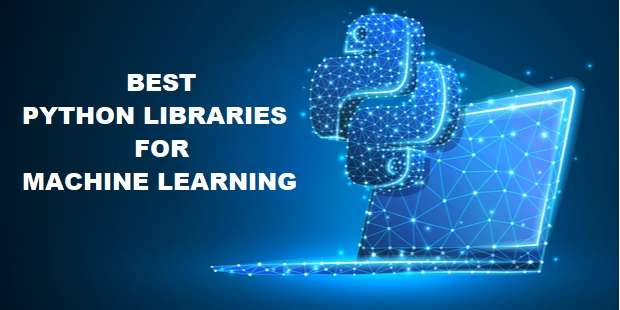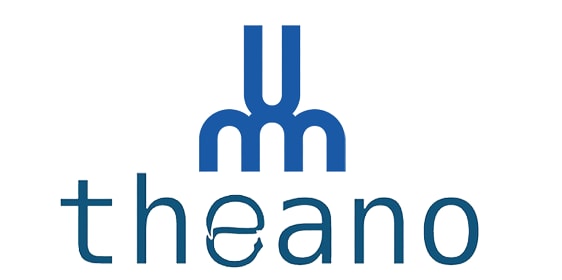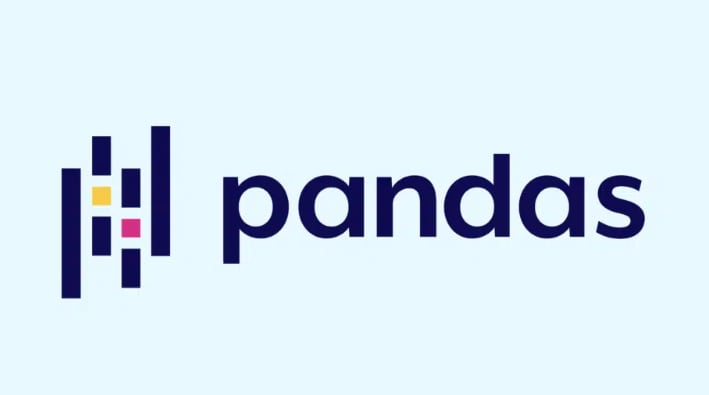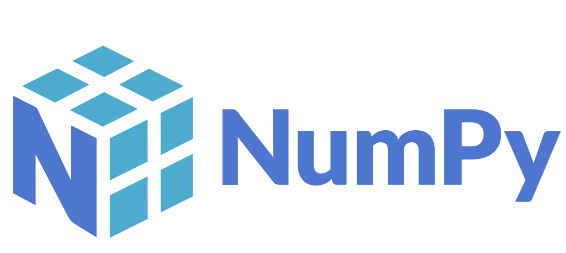This article presents the top 7 best Python libraries for Machine Learning that have eliminated the need for writing separate codes for every algorithm.

In computer science, Machine Learning (ML) is a field that needs a lot of algorithms. This is something that makes many developers afraid of choosing such a complex domain. But this is not the case these days. You don’t need to create separate codes for each algorithm, as Python libraries for Machine Learning are here to lend you a helping hand.
When it comes to implementing Machine Learning algorithms, Python machine learning libraries are considered a preferred language. If you want to master machine learning and data science, you must learn Python. This guide lists the 7 best Python libraries you can use for Machine Learning. Let’s have a look at them.
In this article
A List of the 7 Best Python Libraries for Machine Learning
Below we have listed the top Python libraries that can be used for Machine Learning.
1. SciPy
In 2001, Pearu Peterson, Eric Jones, and Travis Oliphant created this library. An open community of development professionals sponsor and support the current development matters of the SciPy library. SciPy is a widely-used open-source library for mathematics, science, and engineering, built on top of NumPy. It is highly regarded in the scientific community and has a strong user base, often receiving positive reviews and feedback.This library offers a wide range of modules, including but not limited to image processing, Fast Fourier Transform, integration interpolation, linear algebra, special functions, image optimization, and signal processing.
In addition, solving ordinary differential equations and other computational jobs in analytics and science are more features that this library brings to the table. The SciPy library uses a multi-dimensional data array that is offered by the NumPy module. When it comes to array manipulation subroutine, SciPy largely depends on NumPy. The SciPy library was introduced to provide effective numerical functions with NumPy arrays.

Key Features
- It enables you to solve differential equations, and Fourier transforms.
- This library helps you perform complex linear algebra calculations using its highly optimized algorithms.
- It comes with a multi-dimensional image processing feature and a range of other functionalities.
2. Theano
It is considered among the best Python libraries for machine learning and deep learning. If you want to perform matrix calculations and manipulate mathematical expressions, Theano behaves as an optimizing compiler. Its interface is pretty similar to NumPy because it is built on NumPy. The Theano library works perfectly for the Central Processing Unit (CPU) and Graphics Processing Unit (GPU).
The incorporation of the GPU architecture produces faster outcomes. Compared to the CPU, you can perform data-intensive computations 140x faster with Theano on GPU. When Theano deals with exponential and logarithmic functions, it avoids bugs and errors automatically. Moreover, this Python library for machine learning offers built-in tools for validation and unit testing. The fast processing speed of Theano helps you do C projects that need data-intensive computations.
Theano was a popular numerical computation library used for deep learning, but it has been largely superseded by other frameworks like TensorFlow and PyTorch due to lack of active development and certain limitations.

Key Features
- You can determine unsteady expressions with the Theano library and solve them with steady expressions.
- With this library, you can draw symbolic graphs for computations.
- It is quicker than Python and enables you to implement parts of expression in CPU or GPU.
3. Keras
This is one of the great open-source tools for machine learning and neural networks that was introduced in 2015. As of 2023, more than 2.5 million developers are associated with this library. It works on top of PlaidML, Microsoft Cognitive Toolkit, TensorFlow, R, and Theano. The Keras library works with the building blocks of neural networks, i.e., optimizers, activation functions, objectives, and layers.
When it comes to code for Deep Neural Networks, the Keras library offers useful features to process text images and images. In addition to supporting standard neural networks, this library also offers native support for recurrent and convolutional neural networks. Since its introduction to the market, this open source for machine learning shares many aspects with TensorFlow. It makes deep learning and machine learning more accessible to every user.

Key Features
- It exhibits the TensorFlow architecture in an easy-to-understand way.
- This library facilitates commercial Python machine learning because it offers support for large GPUs and TPUs.
- It works well for various applications, like generative deep learning, reinforcement learning, computer vision, and natural language processing.
- The Keras library is very useful for time series, audio, structured, and graphical data.
4. Pandas
It is another incredible library that is listed among the best Python packages for machine learning. Pandas is considered among the best open-source tools for machine learning. It offers profound support for expressive, flexible, and fast data structures designed specifically to work on labeled and relational data. If you want to perform analysis of data in real-time, there is nothing better than using Pandas.
This library provides you with highly optimized performance and is super stable. If we talk about the backend code of Pandas, it is written in pure Python, or C. Pandas uses two different data structures, including "DataFrame (2-dimensional)” and “Series (1-dimensional).” They can easily handle a huge amount of data and use cases from different domains, like finance, social, statistics, data science, and more.

Key Features
- It helps you handle time series and missing data easily.
- To support broad data implementation, Pandas offers a powerful DataFrame object.
- It uses Cython and C to write optimized code for Python.
- This library offers support for merging huge datasets, joining, subsetting, reshaping, slicing, indexing, and much more.
5. NumPy
NumPy is a fundamental library for numerical computing in Python. It provides support for large, multi-dimensional arrays and matrices, along with a wide range of mathematical functions to operate on these arrays. NumPy is the backbone of many other scientific and data-related libraries and is widely appreciated for its performance and capabilities. Well, this library is one of the best Python packages for machine learning. NumPy carries a huge collection of complex mathematical functions. This is why this library has proven to be a powerful tool for processing multi-dimensional, large matrices and arrays. If you are looking forward to handling random numbers, Fourier transforms, and linear algebra, using NumPy will surely be worth it.
Defining arbitrary data types and integrating them with many databases becomes simple and convenient with NumPy. You can also use this library for any type of data as a multi-dimensional container. It allows you to integrate codes of C++, C, and Fortran with out-of-box tools. NumPy holds a few more key features, like broadcasting functions and N-dimensional array objects.

Key Features
- The NumPy library supports linear algebra methods, Fourier transforms, random number generators, and a range of complex mathematical expressions.
- It provides you with more flexibility with its fully optimized high-level Python code.
- This library enables broadcasting operations, indexing, and vectorization by supporting N-dimensional array objects.
- With NumPy, you can enable number operations of different libraries associated with bioinformatics, quantum computing, data science, geographic processing, data visualization, signal processing, image processing, and more.
6. Seaborn
This is also an open-source Python library for machine learning. Seaborn focuses on data visualization and plotting because it is based on Matplotlib. At the same time, it features the data structure of the Pandas library.
The Seaborn Library can help you create graphs of the learning data. Therefore, it is mostly used in machine learning projects. If you are looking for an effective Python library for efficient data analysis and marketing, look no further than Seaborn, as it comes with the ability to create attention-grabbing plots and visually appealing graphs.

Key Features
- You can make engaging graphs and plots with Seaborn.
- It makes your data analysis and marketing more effective.
- As it is an open-source library, you can get a lot of online assistance.
7. Matplotlib
Matplotlib is one of the most widely used data visualization libraries in Python. It provides a flexible and extensive set of tools for creating various types of plots, charts, and visualizations. While it is powerful, it may require more code compared to Seaborn for achieving certain aesthetics.
This data visualization library is mostly used for two-dimensional plotting, which creates publication-quality figures and image plots in different formats. What you can create using this library includes; bar charts, error charts, histograms, scatter plots, plots, and more. The user interface of Matplotlib is friendly and similar to MATLAB.
This library provides an object-oriented AI by using GUI tools, e.g., Qt, Tkinter, wxPython, GTK+. With Matplotlib, you can easily embed plots and graphs into various applications. Though it is the oldest Python library for machine learning, many programmers still use it frequently because it is considered the most innovative and one-of-its-kind Python library for data visualization.

Key Features
- This library enables you to generate plots and charts to present your data in a storytelling format.
- You can customize plots and charts and export them to different formats.
- It offers different GUI-based applications of embeddable visualizations.
- Matplotlib is extended by different libraries and frameworks of Python.
Final Words
Many Python developers create different libraries for machine learning for their own projects and tasks. Later, they release it for the public benefit and make money out of it. The major benefit of using these libraries is that you do not need to write separate codes for different algorithms; instead, you get a pre-built coding package, and you can use it directly to achieve your goal.
If you are looking for the best Python libraries for machine learning, ensure to read through the discussion presented above. It has listed the 7 best Python libraries for machine learning and deep learning along with their key features.
